How To Flush Your Autoflowering Cannabis Plants
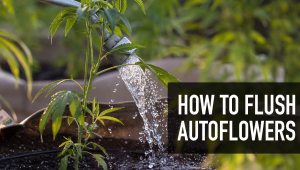
- 1. What does flushing mean?
- 2. The benefits associated with flushing
- 3. Using water and enzymes
- 4. Top tips on how to flush cannabis plants
- 5. How to distinguish well and bad flushed cannabis
- 5. a. Signs of well flushed cannabis
- 5. b. Signs of poorly flushed cannabis
- 6. Is flushing a myth?
- 7. Flushing timing recommendations for each growing substrate
- 8. Flushing cannabis for nutrient lockout or overfeeding
- 8. a. Overfeeding
- 8. b. Nutrient lockout
- 9. In conclusion
After feeding your plant nutrients throughout their life cycle, there comes a point where the plants must be flushed in order to clear out any built-up nutrients, as well as the plant's reserves.
There are many benefits associated with flushing Cannabis and in this article, we explain how flushing works, signs of good and badly flushed flowers, and what to consider.
1. What Does Flushing Mean?
Essentially flushing means supplying enough plain water to flush the growing medium for the final 14 days of the flowering cycle. From seedling until harvest, autoflowers will be fed root boosters, growing and flowering nutrients, as well as boosters and nutrients with high brix counts. During this time not only will undissolved salts begin to collect around the roots, but the plants will also generate their own internal reserve.
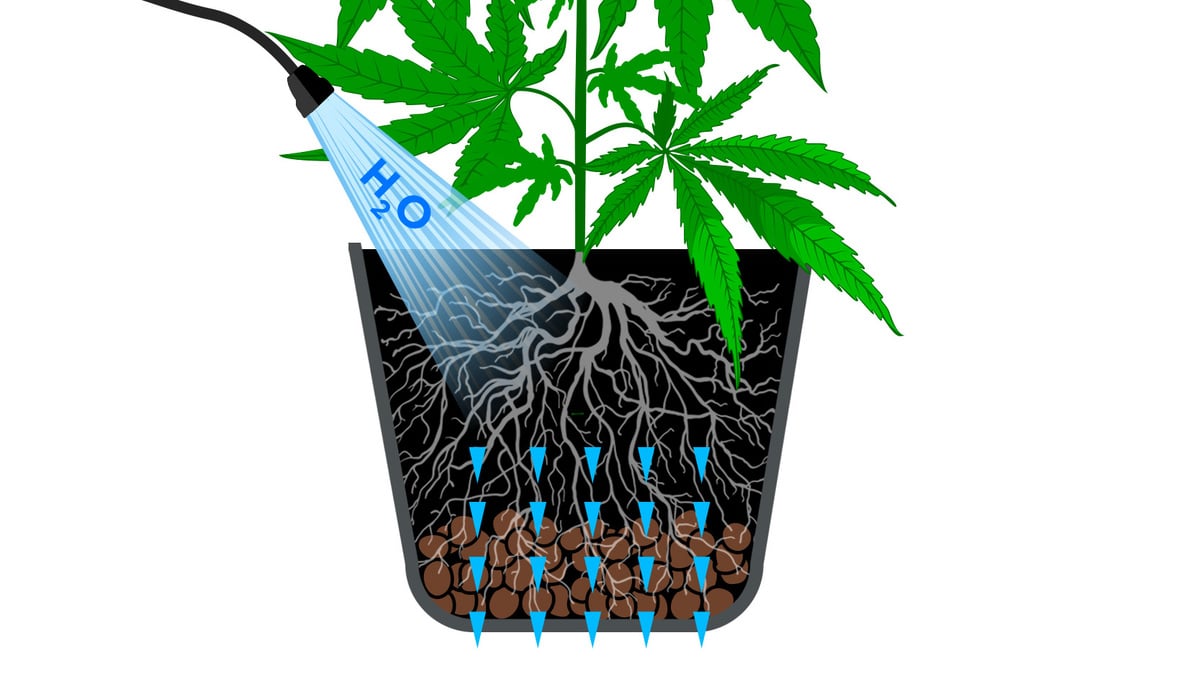
Now it may seem counterproductive to totally restrict the plants of the nutrient solution during the final stages, however, this 2-week time period will do the world of good for both the performance of the plants, as well as the final taste and ash quality when burning.
2. The Benefits Associated With Flushing
Not only will a plant’s roots uptake available nutrients found in the soil, but they will also preserve them inside of the plant acting as a reserve tank. By cutting off all nutrient solution and shifting to pH-adjusted water, this will encourage the plants to use up their internal reserves. As a result, the Cannabis plants will push for the finish line and begin to display an array of deficiencies, indicating they have used up all of the primary and trace elements.
When burning a dried flower there will be a huge difference in the smoothness on the exhale, how smooth and slowly the ash burns, the lightness, and soft quality to the ash, as well as the aroma of a burning joint. The flavors will be far more evident and will improve the sensation on the lungs, taste in the mouth, and overall experience. There is a reduction in blooming nutrients meaning you only need to use your nutrients up to a final couple of weeks, making your expensive nutrients last a little bit longer between cycles.
3. Using Water and Enzymes
When feeding Cannabis plants an organic nutrient solution, it is important to use water that has been adjusted between pH 6-6.8. The reason being that primary and trace elements are more available to be absorbed in this range. Keeping the pH constant during the lifecycle of your autos is very important, and especially during the final few weeks of flushing.
Enzymes are an excellent aid when it comes to breaking down organic matter and substrates. In the same way, our bodies depend on enzymes to break down food responsible for energy uptake, using enzymes on Cannabis plants can improve flavor significantly, as well as speed up the plant’s metabolism.
4. Top Tips On How To Flush Cannabis Plants
1. Do not increase the amount of water you give the plants during the final two-week. Simply discard using nutrients and feed the same amount as normal.
2. If you are growing with living soil and have been feeding only plain water from seed until harvest, then there is no need to worry about correctly flushing the plants.
3. Using chemical-based boosters will leave more of a salt-based residue behind than organics and can be more challenging to clean up.
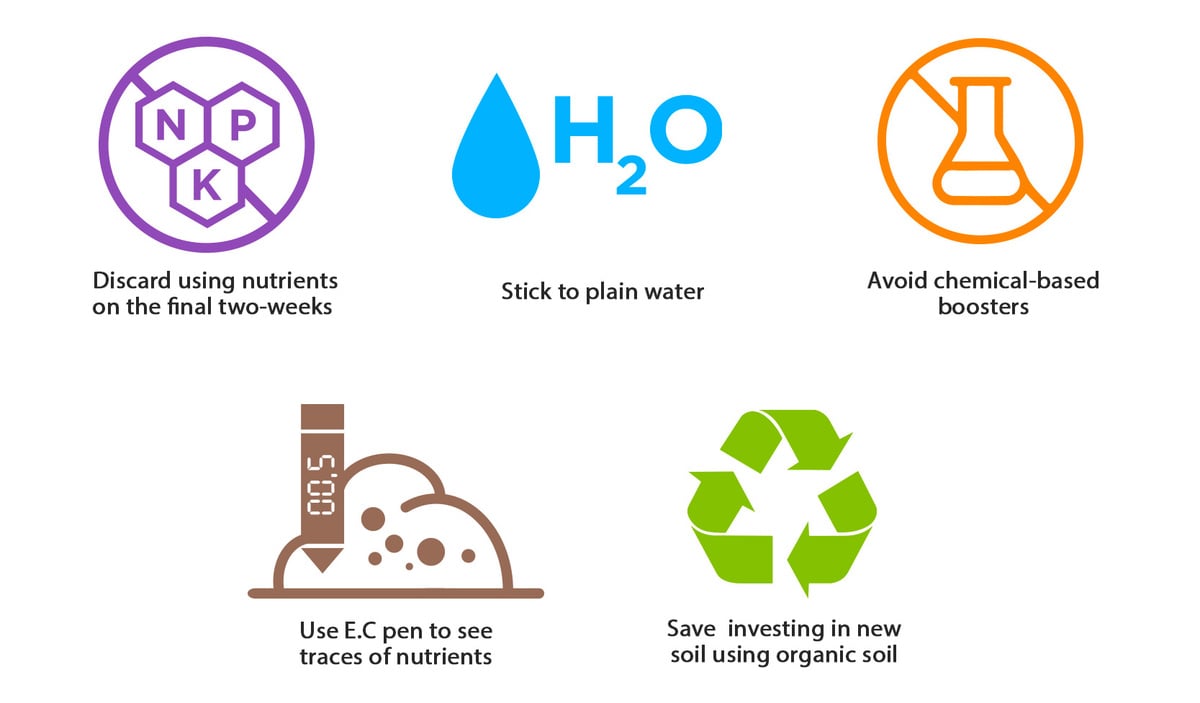
4. If you test the runoff of the water using an E.C pen, then you will have an idea of what traces of nutrients remain in the growing medium.
5. A well-flushed growing medium allows the organic living soil to be reused for another grow, saving investing in new soil.
5. How To Distinguish Well and Bad Flushed Cannabis
Signs of Well Flushed Cannabis
- A smooth and clear flavor that can be enjoyed on the inhale and exhale
- The smoke will not make you want to cough uncontrollably and will be soft and smooth.
- Ash color will be light gray and will have a fluffy texture.
- A joint or blunt will burn evenly with no side burning.
- There would be no need to keep lighting the joint.
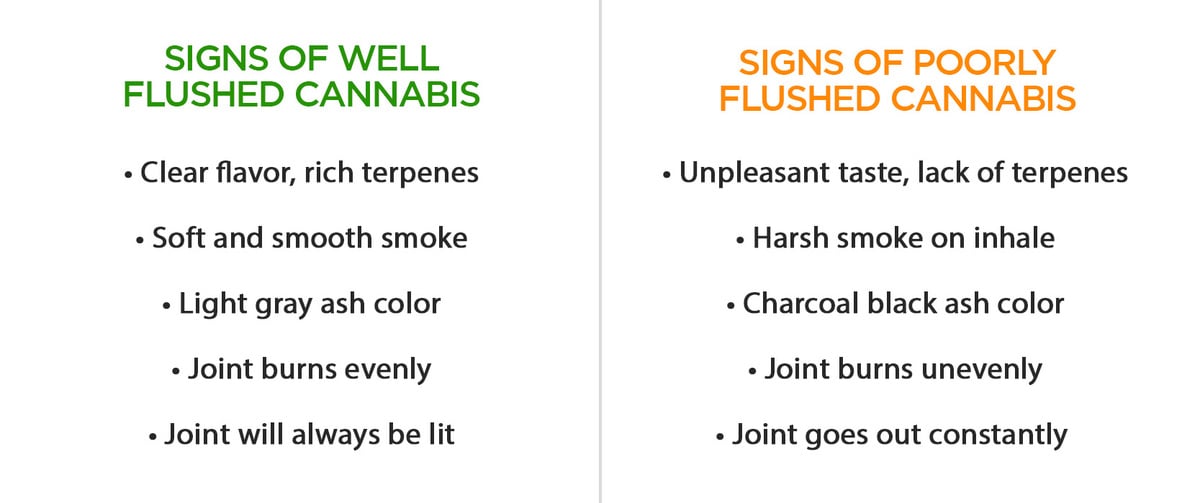
Signs of Poorly Flushed Cannabis
- The taste when burning will be unpleasant, harsh, and lack any terpenes.
- When inhaling, it will cause coughing and sourness of the throat.
- The aroma of a burning joint or blunt will smell terrible.
- The ash will be charcoal black and burn unevenly.
- You will need to keep lighting the joint as it goes out constantly.
6. Is Flushing a Myth?
Some growers strongly believe that flushing is not necessary because once the nutrients are absorbed into a plant’s tissue they cannot be removed by adding water or other cultivation products. However, growers know that plants with a nutrient burn can be flushed to help remove the nutrient excess that causes the burn in the first place. A new study has shown that flushing cannabis plants before chopping them down may not work as we think, which contradicts the common belief among growers that it improves the taste of weed.
As you may know, it’s a common practice for growers to stop using fertilizers during the last two weeks before harvest in order to get a smoother product. But the study held a blind test with flushed and unflushed flowers and the participants tended to prefer unflushed weed. Plants were flushed for either 0, 7, 10, or 14 days but there was no significant change in the nutrient content of the flowers, despite the different flushing treatments.
7. FLUSHING TIMING RECOMMENDATIONS FOR EACH GROWING SUBSTRATE
Not all growing mediums were created equally, and so when considering how long to flush your crop you need to take into account the medium that it has been grown in.
Let’s look at soil cultivation first. There’s no one straightforward answer for soil flushing, as there are so many variables that can affect the soil quality and water retention capabilities. For sandy soil, a 6 to 9-day flush is usually fine, as there will not be a huge amount of trapped nutrients and they will wash away quickly and easily. A heavier soil with a higher clay content will need a longer flush. Anywhere between 14 to 21 days, but 2 weeks will usually be totally fine.
If you are growing in a predominantly coco-coir based mix you can use the plant as your guide. If the bottom leaves of the plant are healthy and green (meaning they still have a heavy supply of nutes available) then flush for a week. If they have started to really yellow and curl then a 4-day flush should be more than enough. Coco-coir flushed easily and well and is the most forgiving cultivation medium in many ways which is why we recommend it for most novice growers.
For growers using a hydroponic method with clay balls (or some other system) as the support for the root structure, a 4 to 7-day flush is what is usually recommended. If you are growing hydroponically with no support to the root system (such as aeroponic or deep water culture) then a 3 to 4-day flush should be all that is required.
Remember to always use your EC or TDS pen to check the runoff during the flushing period. This is the most accurate way of seeing how much total dissolved salts are contained in the growing medium and will give you the best idea of exactly what is going on at the root zone.
If possible, try to flush your plants with lukewarm water. The perfect temperature is 75° F (24° C). This is due to the fact that most of the nutrients contained in the substrate will dissolve easier in a warm solution rather than a cold one.
8. Flushing Cannabis for Nutrient Lockout or Overfeeding
So, there's flushing that needs to be done (debatable, but nonetheless) in the last few weeks before harvest, but how about in other situations? For sure! One of the most common reasons a grower may flush the crop is due to overfeeding issues, or the dreaded nutrient lockout. While they may present as similar problems, they actually differ in a couple of key ways.
Overfeeding
Overfeeding, when discussing cannabis cultivation, simply refers to the act of supplying too many nutrients to the plant. This can happen over time if a grower is not paying attention to their nutrient levels and/or is incorrectly measuring their dosages. This is one of the most common issues that new growers encounter, especially if they are using hydro or coco-coir cultivation methods. Why?
Well, because with both hydro and coco (for the vast majority of cases), the grower will be using liquid synthetic nutrients to feed the plant.
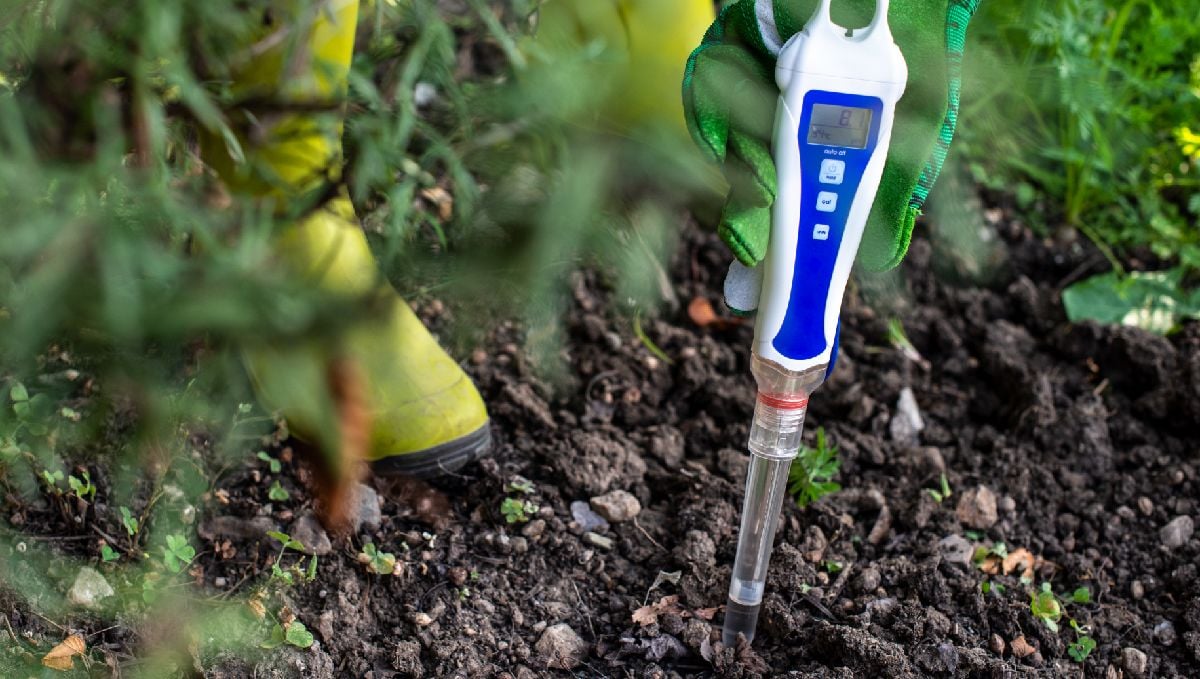
These nutrients are very potent and without the proper tools it's almost impossible to measure them out correctly. Keep in mind that nutrient companies are businesses, and - surprise, surprise - they make money by selling more nutrients. What comes as no surprise is that the dosages that are displayed on the bottles are often higher than necessary, and then to top it off novice cultivators will frequently add even higher concentrations of the nutes thinking that will equate to better plant growth. The opposite is actually the case. Sure, your crop needs those nutrients to survive and thrive, but striking the right balance is super important. Always make sure you are checking the feed water with your pH and EC meter to be sure you're not going to hurt the plants in the long run.
Nutrient Lockout
With nutrient lockout, we are talking about a buildup of salts in the growing medium to the point where they essentially blocked the plant's feeding pathways, and prevent it from accessing the nutrients available. This problem is most common when growing in coco, but can still occur with hydro and soil setups if the feed water has an abnormally high EC. This can also happen if the feed water being provided is the wrong pH. This will cause an imbalance in the growing medium, and make it impossible for the plant to suck up all those delicious nutrients waiting in the growing medium. Ok, how does this relate to flushing?
Well, when you overfeed a cannabis plant or cause nutrient lockout, the very first thing you should do is flush her out quick smart. Both issues can be fixed in no time at all, and before the plant is super affected by the mistake by just flushing it out good and proper.
- First things first - pH some fresh water to the correct range for your medium.
- Water the plants as you would normally, to around 24% runoff.
- Wait for 15 to 30 mins, and then repeat.
- It is a good idea to test the EC or TDS of the runoff from each pot separately to ensure the nutrients are being successfully removed from the substrate.
- Repeat for 3 or 4 days to ensure the substrate is back to an acceptable level.
9. In Conclusion
Spending the extra time to make sure your growing medium is clear of any undissolved salts, and allowing the plant to use its reserves will make a huge difference in the final outcome. It is important to find the right balance during the final few weeks and to understand why the flushing process has advantages over hammering the plants with nutrients.
Good luck producing the finest flavors possible and increasing the end quality of your flower by tenfolds.








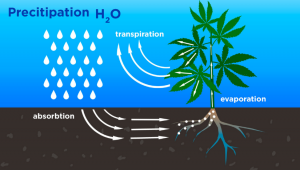
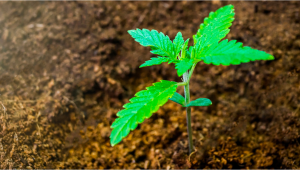


Comments